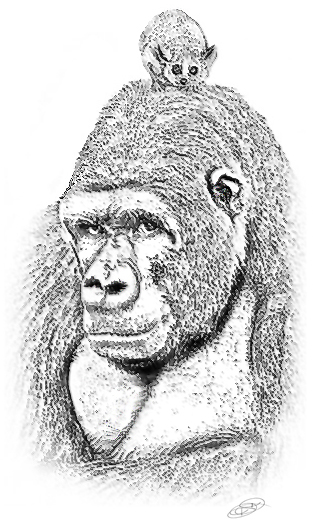Lab Projects

(1) Electrophysiology in behavior-trained awake monkeys
- David Royal
- Octavio Ruiz
- Gyula Sary
- Xin Chen
The lateral geniculate nucleus (LGN) may do more then simply relay sensory signals since it receives numerous extraretinal inputs that together far out-number, in terms of synapses, retinal input. The LGN also contains a complex set of circuits involving inhibitory interneurons. We hypothesize that LGN neurons are part of a dynamic network which carries information relevant not only to sensory quality, but also to behavioral state including signals related to visual attention, task relevance, and eye movements. We are testing this hypothesis and examining how information is regulated at the level of the LGN using standard electrophysiological techniques in awake behaving macaque monkeys.
(2) Studies of functional organization of visual cortex by using optical imaging techniques
- Ilya Khaytin
- Xin Chen
- Xiangmin Xu
To investigate how neurons in visual cortex are functionally organized to process different aspects of visual information, and examine the relationships between functional maps or modules. A). How are basic receptive field properties (such as orientation preference, ocular dominance and spatial frequency selectivity) of V1, V2 and V3 organized in bush babies and owl monkeys? B). Do V1 CO compartments encode segregated visual information? Does V2 and V3 have distinct functional compartments to separately process luminance difference, motion or forms and textures?
Xu's paper in J. Neurosci COVER FIGURE
(3) Feedback pathways from V1 to the LGN in the primate visual system
- Jennifer Ichida
Information traveling to visual cortex has a parallel organization that is seen in many mammalian species. In primates these parallel streams of information are segregated in to the magnocellular (M), parvocellular (P) and koniocellular (K) pathways. One of the goals of this research is to determine how these pathways are reflected in the organization of corticogeniculate feedback from primary visual cortex (V1) to the lateral geniculate nucleus (LGN) in the thalamus.
(4) Receptive field properties of parallel visual pathways (LGN cells)
- Xiangmin Xu (currently Assistant Professor, Department of Anatomy and Neurobiology, University of California, Irvine)
By analogy to previous work on lateral geniculate nucleus (LGN) magnocellular (M) and parvocellular (P) cells our goal was to construct a physiological profile of koniocellular (K) cells that might be linked to particular visual perceptual attributes. Our findings suggest that the K cells consist of several classes, some of which could contribute to conventional aspects of spatial and temporal resolution.
(6) Metabotropic glutamate receptor 5 (mglur5) shows different patterns of localization within the parallel visual pathways in primates
- Yura Shostak (now in Belarus)
Objectives:
- (1) To localize mGluR5 receptors within the layers of V1 in relation to the K, M, and P LGN pathways.
- (2) To compare the mGluR5 synaptic localization and distribution in macaque monkey V1 with that in squirrel monkey.
(7) Immunochemical studies: the distribution of koniocellular lateral geniculate nucleus (LGN) cells in macaque monkey
To estimate the distribution of K LGN cells we immunostained sections to reveal K cells using anti-alphaCaMII kinase. K cell density was measured at three eccentricities according to the map of Malpeli et al. (1996): 0-5 deg (fovea parafoveal), 5-10 deg (paracentral), 10-17 deg (peripheral). Results show that the average density of K cells in these areas is 143.3+38.1 cells/mm2, 100.5+28.6 cells/mm2 and 74.2+14.9 cells/mm2, respectively. Extending this analysis to estimate the number of K cells per unit area of visual space should indicate whether the density of K cells is sufficient to support the chromatic acuity reported for separate M/L and S cone channels.
(8) Molecular aspects of visual system development and orgnization: Cortical development in mutant mice lacking polysialylated neural cell adhesion molecule
- Amy Wiencken-Barger (curently at the Univ. North Carolina)
Cell adhesion molecules are proposed to mediate contact-dependent axon guidance events. Axon guidance involves a number of elements including axon outgrowth, degree of fasciculation, targeting, and branching. We have used mice lacking L1, NCAM-180 (neural cell adhesion molecule-180), or polysialic acid (PSA), to investigate the role of these molecules in the process of thalamocortical development and axon pathfinding.
